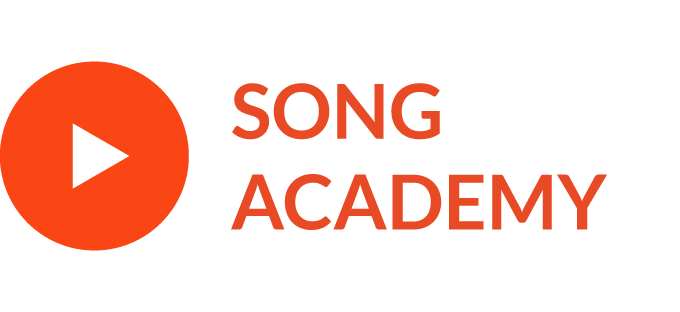Message to Teachers
Why is songwriting so beneficial to your pupils?
We believe that songwriting and music can transform the lives of young people by helping them find their voice. Young people are growing up in a competitive, fast changing & potentially isolating environment, which can cause various pressures and lead to issues with their mental health. Through songwriting young people can communicate their thoughts and feelings and connect to others. This creative and therapeutic process helps young people discover & develop their identity, overcome challenges, feel empowered by speaking up and advance their creative and social skills.
In this age of technology and social media, generation Z may feel their voice isn’t getting heard. They want to speak up about issues that affect them and the songs they write have the potential to spark debate and shape their future at school and beyond.
Here are some of the transferable skills that songwriting develops in young people
Number 1 is the skill of being creative, which means perceiving the world in new ways, finding hidden patterns, making connections between seemingly unrelated phenomena, and generating solutions or providing a commentary. Playing with words and music is the perfect vehicle for doing these things, songwriting is like going to the mind-gym and the more you practice the more creative you are!
Number 2 is the skill of communicating powerfully. Our young songwriters practice communicating their thoughts and feelings in an engaging way. The increased confidence and self-belief empowers young people to speak up and share their voice with their friends, their community and the world. It helps them develop their identity and find their place in the world.
Number 3 is the skill of listening, taking on new ideas and thinking from different perspectives. It encourages critical listening and thinking, which is useful in many other areas.
Number 4 is the skill of giving feedback to your peers and taking on board feedback. We encourage the act of sharing constructive feedback, as well as taking feedback and learning how to use it to potentially improve your work or skills.
Number 5 is the skill of collaboration from writing songs with their peers. Building on other people’s ideas and working together to create a song which they are all happy with is a very crucial skill.
Three Steps to Get Started with Student Songwriting
These are a few steps to get started with your learners:
Step 1 ― Creating a strong concept and an engaging title
Listening to some songs in different genres is a good step for students to get a feel for the style of song they’d like to write and the topics they want to speak up about. This list of songs is a great place to start.
One of the key components, and biggest challenges, of songwriting is trying to express common, relatable feelings in an original and interesting way. The more inventive students can be when describing feelings or experiences (for example, the pressures and joys of growing up and living in our society), the better. These are two exercises students can try when starting a song:
• Have students select five things in their bedroom (chair, window, guitar, books, etc.) and then turn them into interesting song titles. For example: Bed – Safe Haven, Chair – Where I’ll Stay, Guitar – Broken Strings, Books – Read All About It.
• Encourage students to find a quote they like ― For example, “It is never too late to be what you might have been,” “an obstacle is often a stepping stone,” or “to avoid criticism, say nothing, do nothing, be nothing,” and use that as the main concept to build around.
Step 2 – Getting started with writing
Thinking of their object or quote, encourage students to focus their senses on it and write freely for 10 minutes non-stop. Anything goes. All seven senses should be involved in the process: sight, hearing, smell, taste, touch, organic (awareness of inner bodily functions, e.g. heartbeat) and kinesthetic (your sense of relation to the world around you. For example, when the train you’re on is standing still and the one next to it moves, your kinesthetic sense goes crazy!)
After this 10-minute writing exercise, have students think more about the lyrics they’ve written and write some rhyming couplets. Remember that lyrics have a rhythm and using different rhyming schemes can help to shape the lyrics and make songs more engaging. The best two rhyming schemes to start with are A-A-B-B and A-B-A-B.
Once students’ rhyming couplets have been written, they can now count the syllables in each line. If they count the syllables while tapping their foot (creating a tempo), they’ll notice that they’re naturally creating a rhythm. This can be extremely helpful when working out a melody and figuring out how long the song’s lines are going to be.
Next, ask students to think about creating some metaphors with the words that are connected to their song to give it a unique twist. They can write a list of five interesting adjectives, then a list of five interesting nouns, thinking about each combination and writing some sentences. Then, a list of five nouns and five interesting verbs, and repeat the process of thinking about combinations, and so on. Once students have loads of lyrical ideas, they can organise them into different sections to build the song’s story.
Suggested Song Structure:
• Verse 1 — Introduces the song’s message and sets the scene (four lines, A-A-B-B or A-B-A-B)
• Pre Chorus — Link between the verse and chorus, builds up both melodically and lyrically (two lines, A-A or A-B)
• Chorus — Main message of the song, catchiest part and most memorable part of the song (four lines, A-A-B-B or A-B-A-B)
• Verse 2 — Continuing the explanation of the song, solidifying the message and introducing new imagery; lyrics change, melody stays the same as verse 1, possibly with a few small changes to keep it interesting (four lines, A-A-B-B or A-B-A-B)
• Bridge or Middle Eight — A contrasting section that brings the song to a new level and adds depth; rhythmically and melodically the song changes, looking at the message from a different viewpoint (four or eight lines, A-A-B-B or A-B-A-B)
• Chorus — Repeat (can add hooks to the outro of it)
• Outro — The closing passage. It can be instrumental or vocal
Step 3 ― Creating a chord progression and adding a melody
It’s at this stage when we put music together with the lyrics. Sometimes this may involve students playing instruments, but technology is also hugely beneficial in modern music-making. Soundtrap is a recommended tool for student songwriters to add instrumental parts and beats.
Chord progressions are the foundation of pop music. A chord is a collection of notes played at the same time, and a chord progression is when a series of chords are played in a sequence. There are three main chord progressions for songs in popular music:
• I, IV, V (Which is C, F, G when played in the key of C Major)
• I, V, VI, IV (C, G, Am, F in C Major)
• I, VI, II, V (C, Am, Dm, G in C Major)
Once you become familiar with these progressions, you’ll find yourself hearing them again and again in popular songs. For the next step in songwriting, each student should choose a key for their song and select one of the three chord progressions. They can play the chords and improvise different melodies for the lyrics. It works well to have different chord progressions for the verses, chorus, and bridge of the song. If students are using Soundtrap, they can test out many options.
Taking it to the next step
Once students get started with their songwriting, it’s hard to stop. Encourage them to continue exploring and trying new ideas. And, if they feel really strongly about what they’ve created ― and want to continue developing the idea more, they can enter the 2021 Young Songwriter competition, which brings together students from around the globe. When students find their voice through song, they are excited to make sure it’s heard.
Mark the date! We’d love all your creative & musical pupils to enter their original songs into The Young Songwriter 2022 competition. The entry period is 1st February to 31st March 2022. It’s an inspiring opportunity for them to work towards, with a star-studded judging panel including Tom Grennan, Miranda Cooper, Tom Odell, Plested and Janet Devlin. As well as getting their songs heard by some of the best songwriters and key players in the music industry and connecting to our vibrant community of young songwriters, they have a chance of winning some fantastic prizes. Prizes include a recording studio session with a top producer in London, £1,000 worth of Yamaha equipment, IK Multimedia Total Studio 3.5 Max, a Focusrite Scarlett Solo Gen 3 Studio Bundle and a signed Tom Odell and Tom Grennan album!









